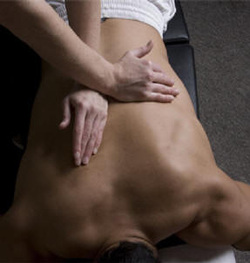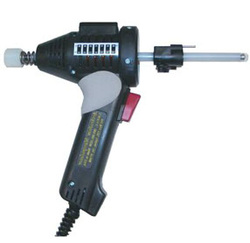Diversified

Diversified Technique is the classic chiropractic technique, developed by D.D. Palmer, DC. and taught in all chiropractic colleges. Diversified Technique was refined and developed by the late Otto Reinert, DC, to address biomechanical failure in each section of the spine, as it relates to specific subluxation. In addition, Diversified methods have been developed to adjust extremity joints, allowing for beneficial applications in treating sports injuries and other injuries. Diversified adjusting of the spine uses specific lines of drives for all manual thrusts, allowing for specificity in correcting subluxation. X-rays and case histories are used in analysis and diagnosis. No instruments are used in the adjusting procedure. Motion palpation and full spine, hands-on techniques are used to deliver a deeper thrust, which can make an osseous (popping) sound as the adjustment is given. Diversified Technique is the main, or one of the main techniques taught in all chiropractic colleges.
Thompson Drop
The Thompson Technique utilizes a "Segmental Drop Table" to enhance the motion force imparted towards the segment or area to be Adjusted. Dr. Thompson introduced the concept of adding motion by inventing a headpiece that would drop away as the adjustive thrust was applied to the vertebral segment. He was granted a patent in 1955 on his concept and thusly was born the Palmer-Thompson drop headpiece. Since the new idea was such a success Dr. Clay then went on to invent a table with drop pieces for adjusting the dorsal, lumbar and pelvic area. this came about in 1957 and from there the rest is history. Today there are numerous manufacturers of drop-piece tables used around the world.
The "Segmental Drop System" takes advantage of the spine's inherent design of the joints in order to move the spinal segment in the direction that will improve the motion of the segment with the one above and below. It just makes good sense that since the spinal joints face front to back and have an incline that slopes more naturally backwards that we can effect increased motion by applying an adjustment from P to A, (Posterior to Anterior) and with an inferior to superior line of correction. The majority of the spinal adjusting utilizing the Thompson Technique has the patient lying prone. (facedown.) This is the basis for Dr. Clay's theory of proper spinal adjusting and the driving force that lead him to invent the drop table.
The "Segmental Drop System" takes advantage of the spine's inherent design of the joints in order to move the spinal segment in the direction that will improve the motion of the segment with the one above and below. It just makes good sense that since the spinal joints face front to back and have an incline that slopes more naturally backwards that we can effect increased motion by applying an adjustment from P to A, (Posterior to Anterior) and with an inferior to superior line of correction. The majority of the spinal adjusting utilizing the Thompson Technique has the patient lying prone. (facedown.) This is the basis for Dr. Clay's theory of proper spinal adjusting and the driving force that lead him to invent the drop table.
ArthroStim Adjusting Instrument

A practitioner's skilled-hands can do things that instruments cannot do. What instruments have to offer is that they can assist a practitioner's skilled-hands to deliver beneficial mechanical forces that would be difficult, or impossible, to produce on their own.
For example, the ArthroStim® instrument can produce a dozen spring-cushioned mini-toggle-recoil™ thrusts per second. Rapid, repetitive thrusting enables a practitioner to distribute the overall thrusting force over a series of thrusts. This helps to reduce the amount of peak force that would be required using a single thrust. This can be a great advantage for working with clients who are sensitive, or in pain.
For example, the ArthroStim® instrument can produce a dozen spring-cushioned mini-toggle-recoil™ thrusts per second. Rapid, repetitive thrusting enables a practitioner to distribute the overall thrusting force over a series of thrusts. This helps to reduce the amount of peak force that would be required using a single thrust. This can be a great advantage for working with clients who are sensitive, or in pain.
Activator Instrument Adjusting

The Activator Method Chiropractic Technique® is a diagnostic and treatment system used by some chiropractors. The Activator Method uses a small, hand-held instrument called the Activator Adjusting Instrument to deliver a gentle impulse force to the spine with the goal of stimulating the nervous system and restoring motion to the targeted spinal vertebra or joint.
It is an alternative to the traditional manual form of spinal manipulation, known as the high velocity low amplitude (HVLA) thrust. Next to the Diversified technique, the Activator Adjusting Instrument is reported to be the most common therapeutic intervention used by chiropractors.
The Activator Method Chiropractic Technique is a type of manipulation described as follows: A spring-loaded, hand-held mechanical instrument called the Activator Adjusting Instrument provides a quick, low-force impulse at specific points. There are two theoretical advantages of an Activator instrument-assisted treatment. The first is based on the speed of the device. The instrument is so quick that the body's muscles are less likely to tense in response, and resist the treatment. The lack of muscle resistance may facilitate the treatment effectiveness. The second is that the applied force is localized and does not add any additional torque or bending movement to the joint.
It is an alternative to the traditional manual form of spinal manipulation, known as the high velocity low amplitude (HVLA) thrust. Next to the Diversified technique, the Activator Adjusting Instrument is reported to be the most common therapeutic intervention used by chiropractors.
The Activator Method Chiropractic Technique is a type of manipulation described as follows: A spring-loaded, hand-held mechanical instrument called the Activator Adjusting Instrument provides a quick, low-force impulse at specific points. There are two theoretical advantages of an Activator instrument-assisted treatment. The first is based on the speed of the device. The instrument is so quick that the body's muscles are less likely to tense in response, and resist the treatment. The lack of muscle resistance may facilitate the treatment effectiveness. The second is that the applied force is localized and does not add any additional torque or bending movement to the joint.
